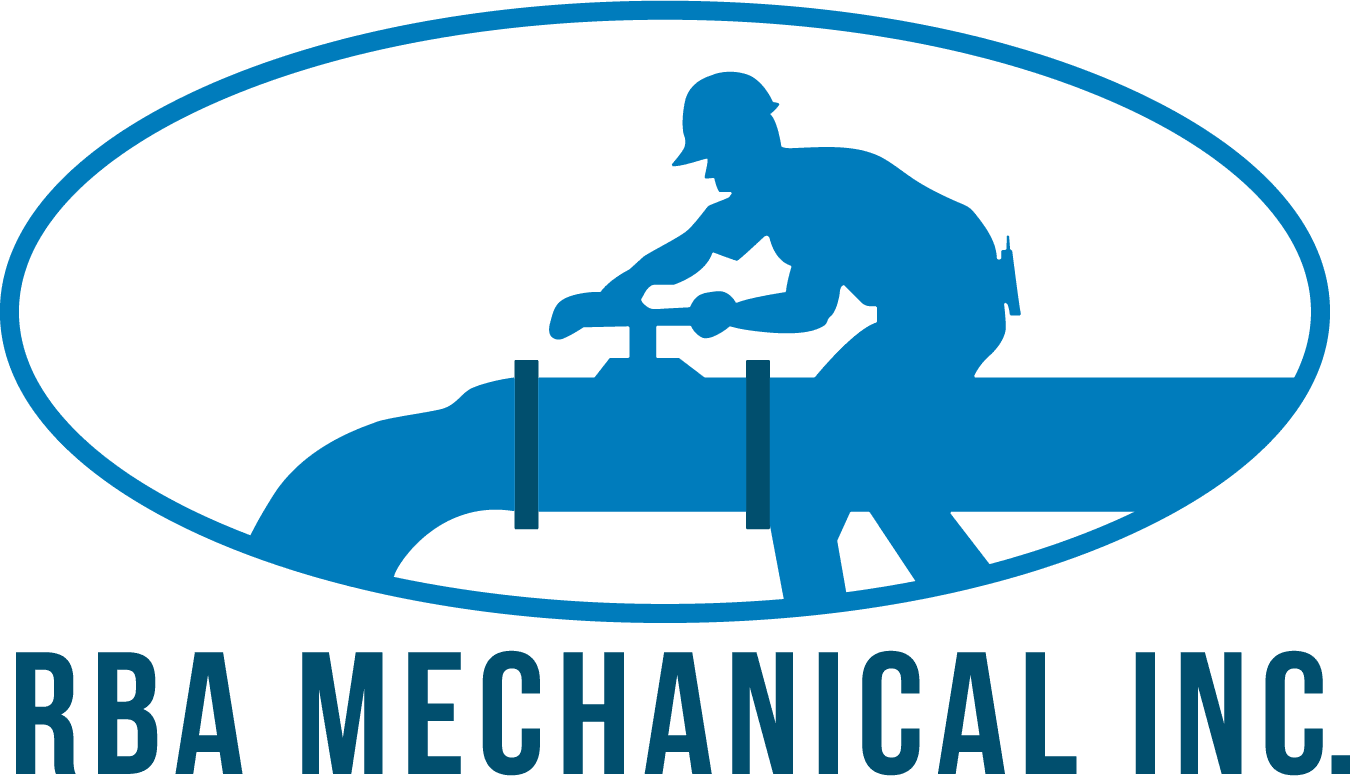What is bacteria in hydronic heating systems and how to get rid of it
Introduction to bacteria in a hydronic heating system
When it comes to keeping your home warm and cozy, hydronic heating systems are a popular choice. They work efficiently, distributing heat through water instead of air. However, like any system, they can develop issues over time—one of the most insidious being bacteria growth. These tiny organisms may be invisible to the naked eye, but their impact on your heating system can be significant. Ignoring them could lead to not only poor performance but also costly repairs down the line.
Understanding what bacteria can do in your hydronic heating system is crucial for maintaining its efficiency and longevity. Let’s dive deeper into this often-overlooked aspect of home comfort and explore how you can keep your system running smoothly without unwanted guests lurking in the pipes!
The impact of bacteria on a heating system
Bacteria in a hydronic heating system can wreak havoc on both performance and longevity. When these microorganisms proliferate, they produce biofilm that clogs pipes and radiators. This buildup restricts water flow, ultimately leading to uneven heating.
Additionally, bacteria can corrode metal components within the system. The presence of corrosive agents increases the risk of leaks and costly repairs. Homeowners may notice rising energy bills as their systems work harder to maintain desired temperatures due to reduced efficiency.
A foul odor might also accompany bacterial growth, creating an unpleasant environment in your home. Such odors are often indicative of underlying issues that require immediate attention.
Ignoring these impacts not only compromises comfort but could also lead to significant operational disruptions over time. Regular checks can help identify any early signs before they escalate into larger problems requiring extensive hydronic heating repairs.
Identifying signs of bacteria growth in a heating system
Recognizing the signs of bacteria growth in your hydronic heating system is crucial for maintaining efficiency. One primary indicator is a noticeable odor, often described as musty or rotten. This smell can indicate that something is amiss within the system.
Another red flag is discoloration of the water. If you notice a cloudy or murky appearance, or a brown or black substance, it may signal bacterial contamination. In many cases, the bacteria may look like rust. Pay attention to any changes in temperature distribution as well; uneven heat can suggest blockages caused by biofilm buildup.
Frequent air locks or unusual noise from the boiler are additional symptoms worth noting. These issues could point to microbial activity disrupting normal flow patterns.
A rapid loss of freeze protection in your system may indicate the presence of bacteria. These bacteria consume heat transfer fluid, such as glycol, as a food source.
Regularly checking filters and components will help catch these problems early on, preventing more significant damage down the line. Stay vigilant with these indicators to keep your hydronic heating system running smoothly.
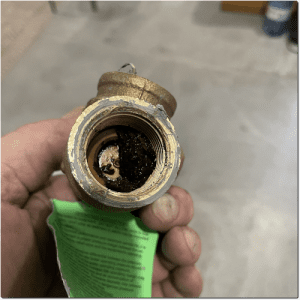
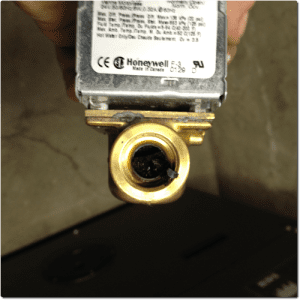
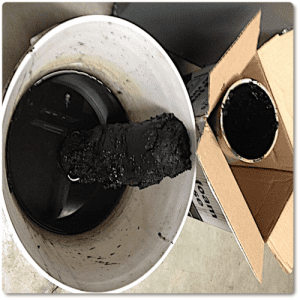
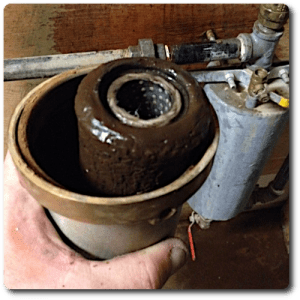
Bacteria will continue to thrive and grow in the hydronic heating system unless it is properly treated. Using a sidestream filter can remove bacteria; however, it will continue to thrive and grow, presenting a persistent problem that does not go away.
Methods for getting rid of bacteria in a heating system
To eliminate bacteria in a hydronic heating system, start with chemical treatments, such as those used by RBA Mechanical. Our specialized biocides target and destroy harmful microorganisms effectively.
Along with chemical treatments, a high quality sidestream filter assembly is a must to get rid of the bacteria from your system.
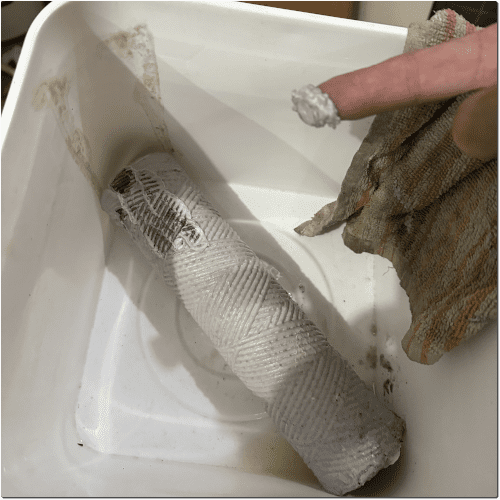
Don’t underestimate regular maintenance checks by professionals skilled in hydronic heating repairs. Their expertise ensures all components function optimally and remain free from microbial contamination.
Preventing future bacteria growth in a heating system
Regular monitoring is key to preventing bacteria growth in your hydronic heating system. Routine checks help catch early signs of trouble before they escalate.
Maintain optimal water quality by having your fluid tested annualy.
Adding biocides specifically designed for hydronic systems, can inhibit microbial activity without damaging components.
Reducing the frequency of system flushing is advisable. Flushing a hydronic heating system with fresh water introduces oxygen, which promotes bacterial growth.
Always keep an eye on any leaks or drips within the system; even small amounts of moisture can lead to problems over time. Addressing issues promptly keeps everything running smoothly and safely.
Importance of regular maintenance and cleaning
Regular maintenance and cleaning are crucial for the longevity of any hydronic heating system. A well-maintained system operates more efficiently, saving you money on energy bills.
During routine inspections, technicians can identify potential issues before they escalate into costly repairs. Bacteria thrive in stagnant water; thus, regular checks help prevent their growth and ensure your heating system functions properly.
Cleaning components like radiators and pipes removes sediment build-up that could hinder performance. This not only enhances efficiency but also improves indoor air quality by reducing contaminants.
Additionally, proper maintenance extends the lifespan of your equipment. Investing time and effort into upkeep means fewer emergency breakdowns down the line—keeping your home warm when it matters most.
Routine service also provides peace of mind for homeowners. Knowing that your hydronic heating system is in optimal condition allows you to relax during cold months without worry.
Conclusion
Bacteria in hydronic heating systems can pose significant challenges, affecting efficiency and performance. Understanding the risks associated with bacterial growth is crucial for maintaining a reliable heating system. Regularly checking for signs of bacteria, such as unusual odors or discoloration in water, can help catch issues early.
Implementing effective methods to eliminate bacteria—such as using biocides and a high quality sidestream filter assembly—ensures your hydronic heating operates smoothly. Taking preventive measures like changing filters often and repairing components immediately will significantly reduce future risks.
Regular maintenance and cleaning are vital components of any successful hydronic heating repair strategy. By prioritizing these practices, you not only enhance the lifespan of your system but also ensure it runs efficiently year-round. Keeping your hydronic heating system clean and well-maintained is essential for optimal comfort in your space.
Order your bacteria treatment
Request Service or Get a Free Quote
Use the links below to browse more tips and advice or use the back button on your browser to return to the previous page.


